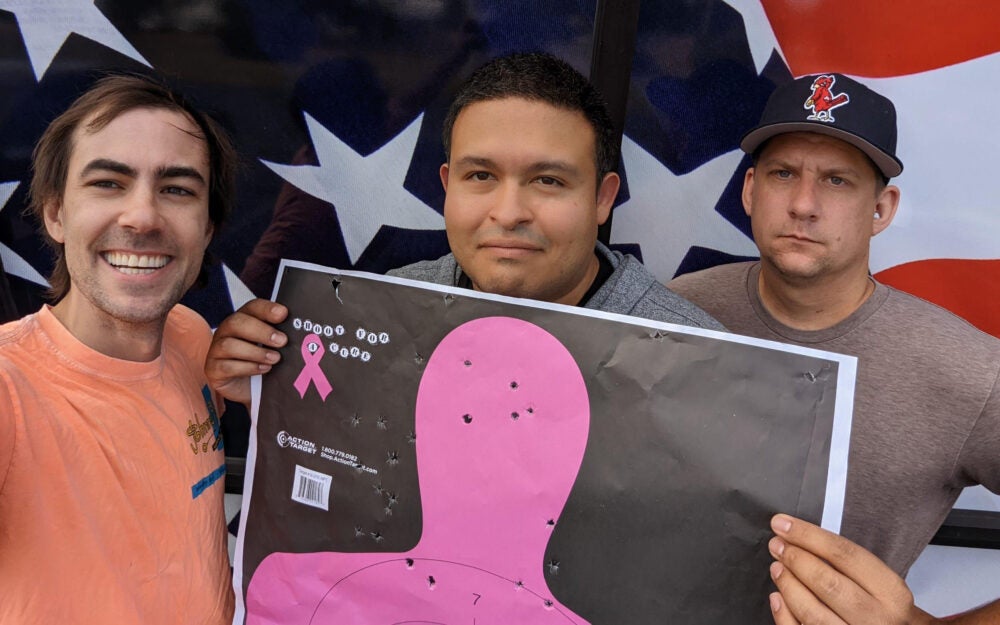By Christian Hoover
Rose Service Learning Fellow
MPH Candidate, Department of Health Policy and Management
In 2021, my research team made an alarming discovery: children living in communities with more gun licenses, or more lead ammunition, had higher blood lead levels than children from lower-licensed communities. When a gun is discharged, lead dust explodes into the air. This dust is inhaled by the shooter, leading to a primary exposure. Additional exposures occur through dust sticking to clothes and personal items, which is taken home and deposited in various places (e.g., cars, clothes, and carpets). Since publication of these findings, which examined Massachusetts for a single year, we’ve assessed this relationship over the last decade. This work confirms our fears: firearm-related lead exposure is likely the single greatest driving force of child blood lead levels in the state.
Lead exposure is one of the most consequential public health issues of the last century; how could we communicate these findings to gun owners who may not know the risks, and may worry about my motives? The short answer, quite simply, was to pick up the phone and reach out. Through the excellent mentorship of my instructors and generous funding from the Rose Service Learning Fellowship, I did just that. I completed a course in Community-Based Participatory Research in 2021. Many of the examples used in the course focused on working with over-researched or traditionally disempowered groups. I wondered if this approach could be used with communities that were neither.
With that question in mind, I began the outreach portion of my fellowship. I conducted informal interviews with my gun-owning friends, family, and on firearm-related social media forums. I wanted to understand how much awareness there was of this problem with the hope of working alongside gun-owners to address them. I wound my way outwards towards larger organizations. Each time I would start my conversations with a nervous preamble, reassuring them of my collaborative intentions and owning that there might be hostility between our groups. Did they use lead ammunition and what kept them from adopting non-lead shot? Were they aware of the risks of lead-tracking? What would they suggest in solving the problem, if they felt it was worth addressing at all? Many major organizations responded positively to my outreach, touting considerable environmental legislation they had supported in the past, or stewardship alongside the Department of Environmental Health. I soon dropped the nervous preamble.
Throughout my discussions this summer, most gun owners expressed surprise and concern about lead exposure, but also held a litany of reasons why there may be no solution. Many considered lead ammunition cheaper than non-lead. While an ammunition rebate system was viable, there were also concerns about accuracy (when discussing a recreational ban in California in 2019, legislators noted receiving angry calls from the Olympic committee on competitive shooting). Alternatives are also alleged to be less humane for hunting and I heard arguments about guns in use today; how they are not designed for use with non-lead ammunition and will experience rapid degradation.
However, having range attendees and casual firearm users change their clothes completely to mitigate tracking-related risks might be the sweet spot. After all, literature examining non-firearm related lead-tracking suggests uniform changes could help. In my own work, I’ve seen that occupations with lead exposure that encourage uniform changes (e.g., first responders) did not have higher rates of lead exposure in their communities when compared to those who do not (e.g., construction workers). When I asked one organization director if they would consider promoting this behavior, he replied, “Yeah, we could consider that. But we don’t do a laundry service.” Unfortunately, while there were many signs that progress could be made on this issue, major problems still loom large.
As part of my outreach efforts, I also attended courses on firearm training, hunting safety, and went shooting (a first for me). At no point did the topic of lead risks come up and ammunition was displayed without mention of the metal. The ranges I went to also did not offer any personal hygiene products in the same way they offered ear and eye protection, which were prominently displayed behind the counter and required for range use.
My work with this fellowship is still ongoing. Health communications haven’t been settled on, and it’s a challenging political environment for some gun owners to bring up matters of safety. However, I’m optimistic that these relationships will make future collaborations, such as general research, more likely. And I’m grateful to have learned first-hand that the skills I developed in my Community-Based Participatory Research can be applied to empowered communities just as well as those who are disempowered.
This experience has taught me that taking the first step is always the most challenging. And I think in matters of firearm safety, that first step rarely gets taken by many other researchers. But it also taught me that there’s so much to be learned by engaging in good faith with this community. In Massachusetts, almost 14% of the population own firearms. The United States has twice as many guns as people and is the third most populous country in the world. People of all ages, races, and political affiliations own and operate firearms. A vast majority of them are safety-oriented and concerned with environmental conservation. Most are active and willing participants in discussions of safety – they just need to be invited into the conversation.
